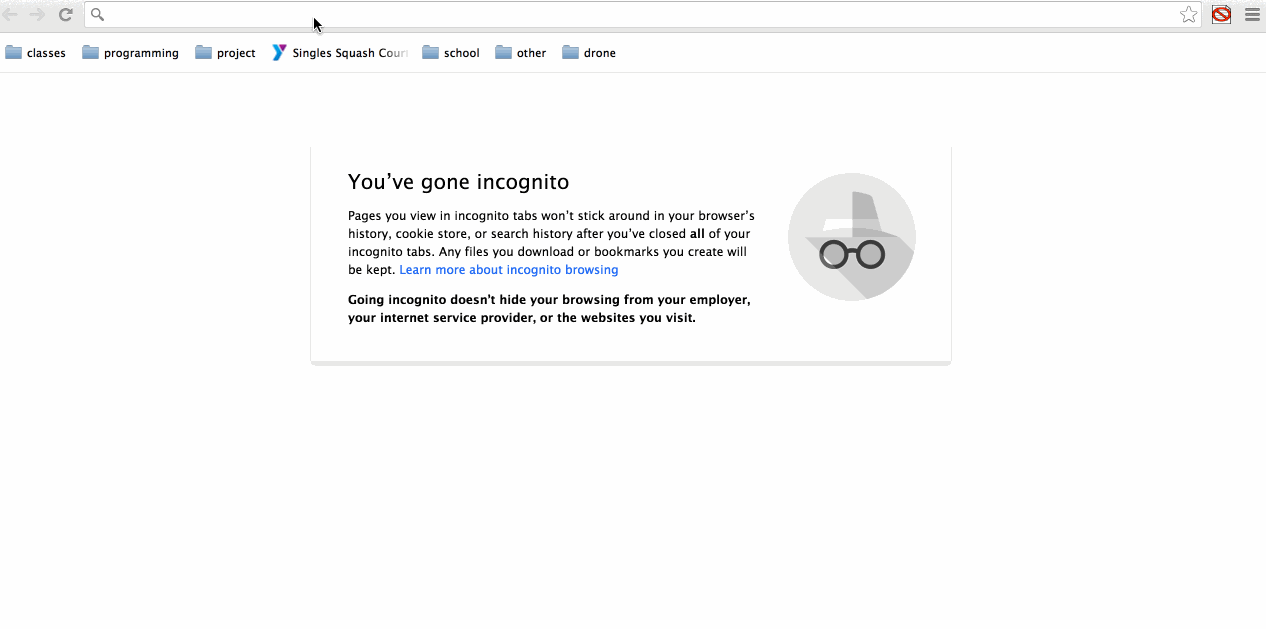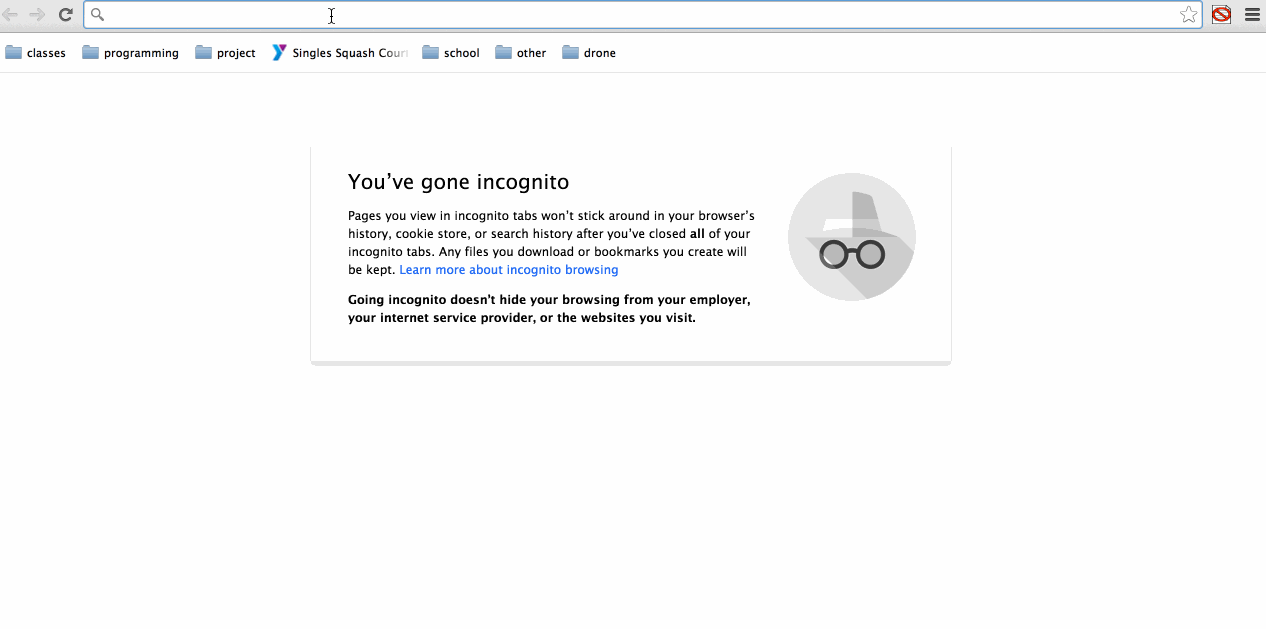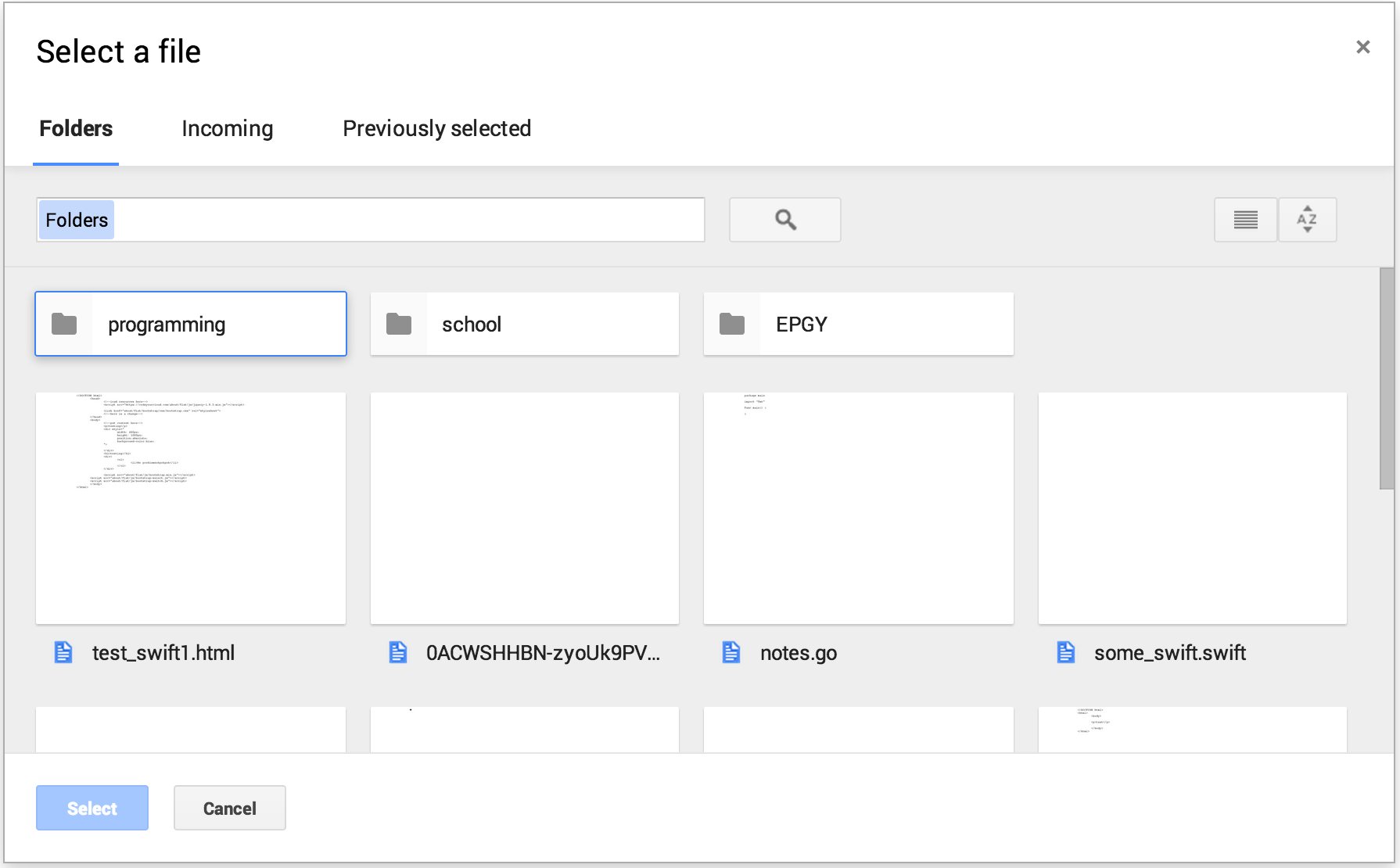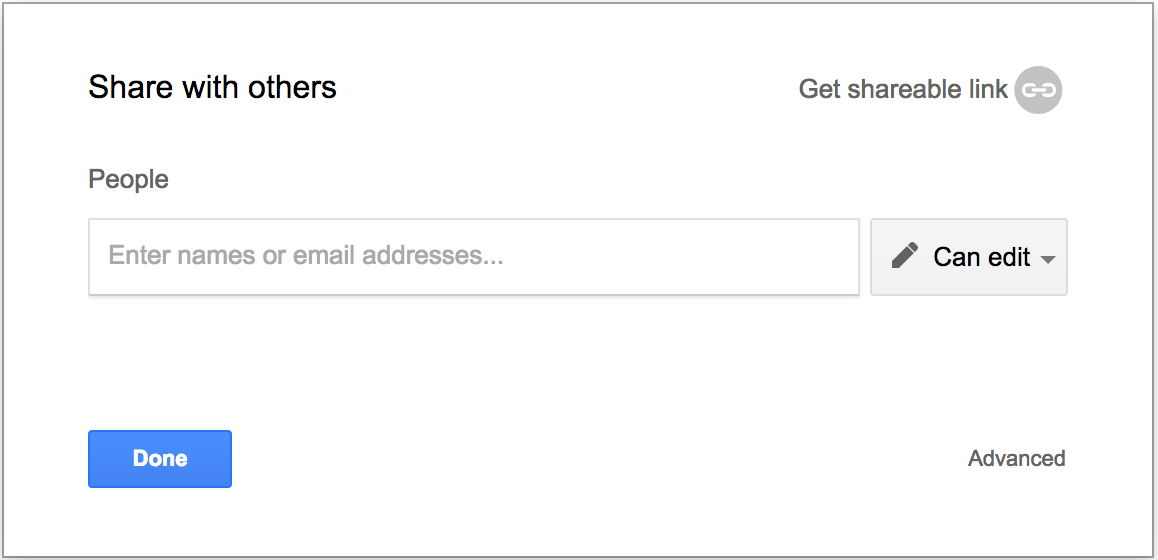Google APIs made easy
###Getting Started###
<script src="main.js"></script>
<script type="text/javascript" src="https://apis.google.com/js/client.js?onload=loadDrive"></script>
<script src="googlejs.js"></script>NOTE: you MUST DO THE FOLLOWING STEPS! otherwise, it won't work!
You'll neeed to get started with the Google API.
###Things to Know###
By default, the function loadDrive() will be called. This is a good place to set the information that you got earlier
function loadDrive(){
//this function is called once the API is loaded
googlejs.clientId = '953350323460-0i28dhkj1hljs8m9ggvm3fbiv79cude6.apps.googleusercontent.com';
googlejs.appId = '953350323460';
googlejs.developerKey = 'AIzaSyBTSFIgQkLly9v6Xuqc2Nqm-vX0jpyEbZk';
}Each Google Drive file, folder, and user has a unique id. You can find the id of a file or folder by using the pickFile() or pickerFolder() methods. These will return an object, which can be parsed for the id.
Each user also has a root folder (the highest level folder in your Google Drive file tree). This is stored under googlejs.rootFolderId once the googlejs.loadDrive() method is called and executed.
###Checking Login Status### One thing that you might want to do is to check if the user is already logged in.
function loadDrive(){
googlejs.clientId = '953350323460-0i28dhkj1hljs8m9ggvm3fbiv79cude6.apps.googleusercontent.com';
googlejs.appId = '953350323460';
googlejs.developerKey = 'AIzaSyBTSFIgQkLly9v6Xuqc2Nqm-vX0jpyEbZk';
googlejs.isLoggedIn(function(res,err){
if(res === true){
//already logged in
} else {
//not yet logged in, need to be authorized
}
});
}###Logging User In###
There are two ways to log the user in. One is to redirect the user to a specific url, which then redirects the user again, once the authorization is complete to another (redirect_url). This url must be specified in the Google Developer console's "credidentials" section.
googlejs.login(true, function(){
//the user will be redirected via window.location.href
},"https://example/blahblahblah");The other way creates a popup that authorizes the user.
googlejs.login(false, function(){
},"");###Loading Drive###
googlejs.loadDrive(function(){
});###Getting User Info### Before you can get user information, you must load Google Drive (see above)
Knowing information such as the email and storage space of a user is important. The googlejs.getInfo() method will return this information as an object.
googlejs.getInfo(function(res){
console.log(res);
});###Picking Files/Folders###
Once Google Drive is loaded using the googlejs.loadDrive() method, you can pick a file or folder. The information about the picked objects is returned via the callback.
For a file:
googlejs.pickFile(function(data){
console.log(data);
});For a folder:
googlejs.pickFolder(function(data){
console.log(data);
});The most important piece of information that the callback will give you is the id of the selected object. This can be found by looking through the returned object.
###Uploading a File### The file will be uploaded to the folder selected by the user, and the object, including the id of the new file, will be returned.
googlejs.upload(function(data){
console.log(data);
});###Sharing a File### Once you have the id of a file, you can use it to show the share dialog.
googlejs.showShare("0ACWSHHBN-zyoUk9PVA");If you want to manually get the sharing permissions for a file:
googlejs.getPermissions("0ACWSHHBN-zyoUk9PVA", function(data){
console.log(data);
});###Purging###
Sometimes, a translucent <div> will be left over from the the sharing, uploading, and opening dialogs. These should be cleared by default, but if id didn't, use this.
googlejs.purge();###Content### To get the raw text content of a file
googlejs.content("0ACWSHHBN-zyoUk9PVA", function(code){
console.log(code);
});###Saving### To update the file and save it
googlejs.save("0ACWSHHBN-zyoUk9PVA", function(){
console.log("saved!");
}, "this is the new text");Todo
- token refresh (done)
- Google Drive
- log in (done)
- log out (done)
- check if logged in (done)
- open file dialog (done)
- file (done)
- folder (done)
- upload dialog (done)
- share dialog (done)
- get contents (done)
- make changes (done)
- get title (done)
- rename (done)
- get file metadata (done)
- new file (done)
- add file to folder (done)
- remove file from folder (done)
- get stuff
- parents (done)
- all files (done)
- files in folder (done)
- Google Realtime
- detect changes
- make changes
- get collaborators
- info
- get user info (done)



